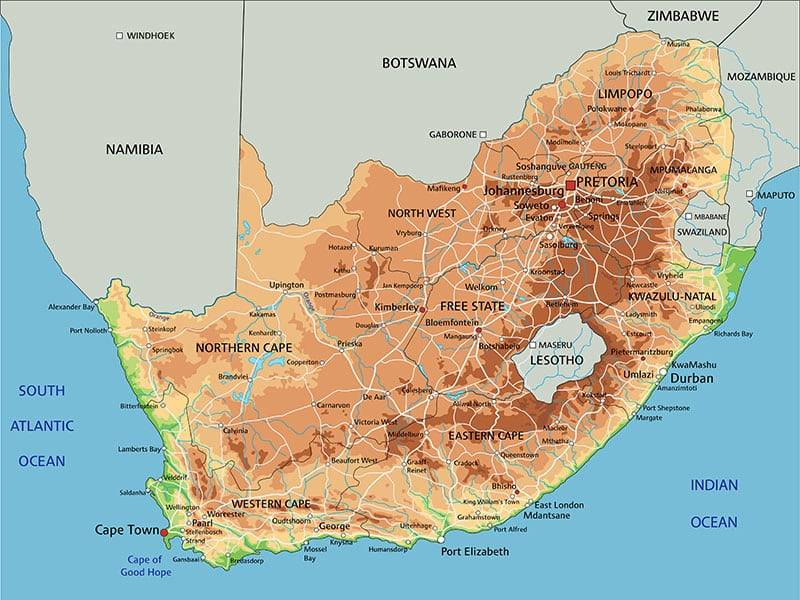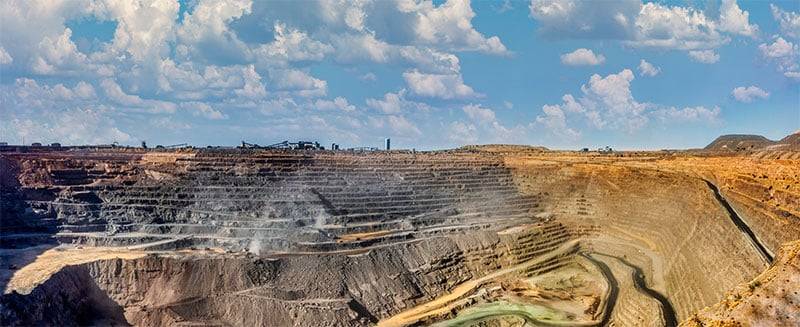The gleam of these precious stones extends far beyond the mines. This glittering asset, deeply embedded in the South African terrain, has historically been a cornerstone for economic elevation, making the nation a significant player on the global stage of the diamond trade. The interconnection between diamond reserves and the financial elite of South Africa is a narrative that encapsulates the essence of wealth generation and economic resilience. At the intersection of natural abundance and financial acumen, the earth’s crust hides carbon crystals and potential wealth-building opportunities. This symbiotic relationship has not only shaped the financial landscape of South Africa but has also created a nexus of potential opportunities for the wealthy.
The exploration of diamond reserves as a potent financial asset is a catalyst for economic advancement. This article delves into the core of how diamond reserves have, over the decades, been instrumental in shaping the financial elite in South Africa, driving investment strategies, and fostering a conducive environment for wealth preservation and multiplication. Through a lens that connects geology with the economy, this article aims to unveil the myriad ways in which the diamond reserves are more than just shiny stones but a robust foundation for the financial prosperity of South Africans.

Economic Significance of Diamond Reserves
The diamond reserves of South Africa are not mere geological marvels; they are substantial economic assets that have significantly contributed to the nation’s financial infrastructure. The revenue generated from the diamond mining sector has been instrumental in bolstering the country’s economic stability, demonstrating the symbiotic relationship between natural resources and financial prosperity.
01 Trade Balance
South Africa’s diamond trade scenario showcases a favourable balance. The nation’s diamond exports play a pivotal role in maintaining a positive trade balance, thereby contributing to economic stability. For instance, in July 2023, South Africa’s diamond exports amounted to ZAR 3.96 billion, and imports were valued at ZAR 724 million, resulting in a positive trade balance of ZAR 3.24 billion. These trade dynamics reflect the intrinsic value of diamond reserves as a solid trade asset
Wealth Aggregation: Simple, Dynamic, and Secure Beyond Compare. Discover the Altoo Wealth Platform!
02 Employment Opportunities
The diamond mining sector is a significant employer in South Africa, providing numerous job opportunities to the local populace and contributing to the reduction of unemployment rates. The sector’s employment capacity has a ripple effect, extending to other allied industries and thus amplifying the economic benefits. In 2022, the broader mining industry, which encompasses diamond mining, employed a total of 475,561 people, illustrating its role as a substantial employment generator. The employment opportunities created by the diamond mining sector play a crucial role in enhancing the living standards of many South Africans, offering them a stable source of income, and fostering economic independence. Moreover, the sector’s contribution to employment also translates into skill development among the workforce, nurturing expertise that could be beneficial across different industrial domains within and beyond South Africa.
03 Revenue Generation
The revenue generated from diamond mining is a substantial source of income for both the nation and its citizens. In 2021, the mining industry, including diamond mining, contributed roughly ZAR 219.5 billion to South Africa’s economy. This revenue not only aids in funding public projects but also in fostering a conducive environment for further investments in various sectors.
04 Investment Landscape
The diamond reserves open up a range of potential investment avenues for UHNWIs and HNWIs. While the mining sector is fraught with uncertainties, the potential for high returns is a compelling factor for investors. However, investment in diamond mining could be influenced by several factors, including geopolitical stability, regulatory frameworks, and global market demand.
05 Enhanced Global Standing through the Diamond Lens: South Africa’s Shimmering Prospects
Being a dominant player in the global diamond market, South Africa has indeed carved a niche for itself. The country’s prestigious standing in the diamond trade transcends national boundaries, fostering an environment ripe for foreign investments and nurturing international trade relationships. The reverberations of its diamond clout extend beyond the sparkling allure of the gemstones, embedding South Africa firmly in the global economic arena.
South Africa’s diamond legacy has not only crystallised its financial landscape but also significantly augmented its global stature. South Africa, as the most developed and diversified economy on the African continent, offers a mature and diverse economic platform supported by a robust financial sector. This economic maturity, in turn, grants preferential access to lucrative export markets in the European Union and the Southern African Development Community (SADC).
The international recognition of South Africa’s diamond industry acts as a beacon, drawing foreign investments to its shores. In recent times, despite political and socio-economic uncertainties, South Africa remains a largely conducive destination for U.S. investments, with the dynamic business community being highly market-oriented and driving economic growth. The country continues to attract investors eyeing a strategic location to access the rest of the African continent.

Moreover, the country’s prominent role in the diamond trade has ripple effects on its international trade relationships. The Trade, Investment, and Development Cooperation Agreement (TIDCA) negotiated between the United States and the Southern African Customs Union (SACU) in 2008 and the bilateral tax treaties with the U.S. underscore the collaborative economic engagements fostered by South Africa’s thriving diamond industry.
The allure of the diamond trade in South Africa also reflects in the increasing foreign direct investment (FDI) flows to the African continent, with South Africa accounting for a substantial portion of the intrafirm financial transactions in 2021. This investment surge, coupled with the rise in FDI in 2018, signifies global confidence in the African diamond hub and its potential to catalyse economic synergies beyond its borders.
While the primary diamond exporting nations in 2022 were India, the United States of America, the United Arab Emirates, Hong Kong, and Belgium, the significance of South African diamonds in the global market remains unyielding. The meticulous craftsmanship, ethical mining practices, and historical essence embedded in South African diamonds continue to uphold the country’s esteemed position in the global diamond trade.

Historical Evolution of Diamond Mining
The historical narrative of South Africa is richly intertwined with the tale of diamond mining, dating back to the 19th century. This period marked the inception of a transformative journey that resonated not only within the mining sector but also significantly impacted the broader spectrum of the nation’s economy. The adventure commenced with the discovery of the first diamond near the Orange River in 1867, igniting a diamond rush that attracted individuals and investors from various corners of the globe. The fervour was further fueled by the subsequent unearthing of the Kimberley diamond in 1871, firmly placing South Africa on the global map of diamond production.
A significant transformation ensued within the diamond mining sector, transitioning from artisanal mining to industrial-scale operations. These changes happened because of new mining methods and technology, which made diamond extraction much more efficient and yielded more diamonds, which was good for the economy. The revenue generated from diamond mining has historically emerged as a significant contributor to South Africa’s GDP. Besides, the sector acted as a catalyst for the development of other industries like construction and manufacturing, creating a multiplier effect on the economy.
Global trade dynamics evolved with South Africa’s emergence as a dominant player in the international diamond market. This status not only enhanced the nation’s trade relations but also established a reputable standing within the international mining community. The global demand for diamonds played a pivotal role in shaping South Africa’s export policies and trade agreements, reinforcing its position in the global trade landscape.
Over the years, the governance framework overseeing the diamond mining sector has evolved to foster a conducive environment for investments while ensuring adherence to ethical practices. The regulatory frameworks were revised to align with global standards, promoting responsible and sustainable mining operations. Moreover, diamond mining had a significant impact on community development. The revenue generated from the sector often found its way into local development projects, contributing to societal upliftment and enhancing the living standards of the local populace.
Lastly, the historical evolution of diamond mining moulded the investment landscape, unveiling new avenues for many to channel their resources. Despite the sector’s challenges, there are numerous financial opportunities that, if exploited, could lead to wealth creation and economic expansion. The interplay of historical evolution, regulatory frameworks, and global trade dynamics continues to shape the investment landscape, making South Africa’s diamond mining sector a pivotal component of its economic narrative.









